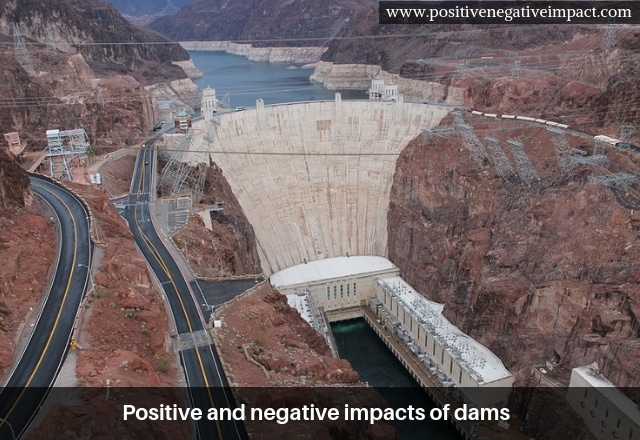Dam building is not a modern concept and is almost as old as the human civilization; In fact, some of the earliest dams were built around the same time as the first cities came into existence. The oldest operational dam today happens to be the Lake Homs dam in Syria, which was built around 1319 BC by King Seti the first. This dam is still working to this day and continues to support the surrounding region by providing them with much-needed water for irrigation and for Hydropower as well. But building dams often requires a lot of material to be sourced from local sources which can have a widespread impact on local flora and fauna. This is why it is important that we take a closer look at some of the positive and negative impacts of dams.

Positive impacts of dams
- Irrigation: When it comes to building dams, providing a ready source of water for irrigation is one of the primary motivators behind the idea. The fact remains that potable water is scarce in various parts of the world and several countries are dependent on seasonal monsoon in order to supply the local population with water for irrigation and for other essential purposes. But the fact is that seasonal weather varies inadvertently and this is why dam building became a necessity to provide the local populace with much-needed water in order to combat any water scarcity as a result of a failed monsoon.
- Drinking water: The other primary reason behind building dams is to provide the local populace with essential drinking water, 24*7, all year long. In fact, some of the earliest cities were built around river banks but due to various geological factors including earthquakes, some of these rivers ran dry in a matter of few years. This necessitated dam building to help combat water shortages, and most of the dams that are still operational today provide drinking water to residents in and around the local area. For example, the Hoover dam provides both drinking water and electricity to cities like Los Angeles, Las Vegas, Phoenix, and San Diego.
- Hydropower: This is more of a modern invention and one that came into being in the last century; thanks to innovative methods, we are now able to use dams to generate hydroelectric power. Essentially, the water is passed under great pressure through turbines, causing them to spin at great speeds which in turn produce electricity. A single dam can help provide enough energy to power up a small town, all year long and the fact that it is clean energy which comes with no noxious fumes or greenhouse gases is just icing on the cake.
The negative impact of dams
- Environmental damage: Often building a dam in a particular area requires flooding vast swathes of land, submerging the entire local ecosystem under water permanently. This has an impact on the local environment and especially on several species that are dependent on natural habitats for their very survival. Furthermore, this also requires all local inhabitants to move to higher areas and more often than not, the local population are not compensated adequately to make up for the loss of their ancestral lands or even a newly built home.
- Fish: One of the negative aspects of any dam is that it often prevents fishes and other organisms from migrating to their natural breeding grounds. And while several studies have indicated that some of the affected species have found new grounds, the fact remains that the population levels have started plummeting of late.
- Risk of floods: One of the positive aspects of dams is that it prevents floods and ironically, this is the same reason to be wary of dams. Dams that are old are subject to extreme pressures for long periods of time and as a result, they may have developed structural damage. To date, not many countries bother to check out their dams in detail to assess if the dam in question has structural damage or not. As a result, even a simple earthquake can cause the dam to collapse, flooding the entire valley, and causing fatalities. Incidents such as these have happened in recent past, such as the Banquet and Shimanten Dam collapse in China which caused the death of over 171000 people.
These are some of the positive and negative impacts of dams; this is why it is important to assess and maintain all dams, regularly to avoid some of the negative impacts, such as large-scale flooding as a result of total dam failure.
- Tulip Mania – The Story of One of History’s Worst Financial Bubbles - May 15, 2022
- The True Story of Rapunzel - February 22, 2022
- The Blue Fugates: A Kentucky Family Born with Blue Skin - August 17, 2021
